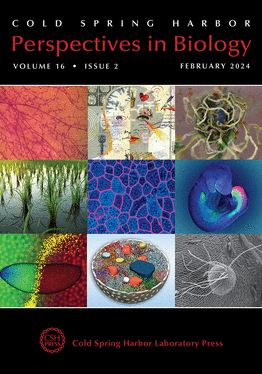Cellular Contributions to Glymphatic and Lymphatic Waste Clearance in the Brain
IF 8.4
2区 生物学
Q1 CELL BIOLOGY
引用次数: 0
Abstract
Cerebrospinal fluid (CSF) bathes and cushions the brain; however, it also serves a major role in the clearance of metabolic wastes and in the distribution of glucose, lipids, and amino acids. Unlike every other organ in the body, the brain parenchyma lacks a traditional lymphatic system to drain fluids and central nervous system (CNS) antigens. It was historically assumed that all brain wastes were removed by endogenous processing, such as phagocytosis and autophagy, while excess fluids drained directly into the blood. However, the twin discoveries of the glial-lymphatic (glymphatic) system and meningeal lymphatics have transformed our understanding of brain waste clearance. The glymphatic system describes the movement of fluids through the subarachnoid space (SAS), the influx along periarterial spaces into the brain parenchyma, and the ultimate efflux back into the SAS along perivenous spaces where it comes into direct contact with the meningeal lymphatics. The dura mater of the meninges contains a bona fide lymphatic network that can drain CSF that has entered the dura. Together, these pathways provide insights into the clearance of molecules and fluids from the brain, and show that the CNS is physically connected to the adaptive immune system. Here, we outline the glymphatic and lymphatic systems, and describe the cellular components that are important to their function.细胞对大脑淋巴管和淋巴管废物清除的贡献
脑脊液(CSF)是大脑的沐浴液和缓冲液,但它在清除代谢废物以及分配葡萄糖、脂类和氨基酸方面也发挥着重要作用。与身体的其他器官不同,脑实质缺乏传统的淋巴系统来排出体液和中枢神经系统(CNS)抗原。人们历来认为,所有脑废物都是通过吞噬和自噬等内源性处理方式清除的,而多余的体液则直接排入血液。然而,胶质-淋巴系统(glymphatic)和脑膜淋巴管的双重发现改变了我们对大脑废物清除的认识。淋巴系统描述了液体通过蛛网膜下腔(SAS)的运动,沿动脉周围间隙流入脑实质,并最终沿静脉周围间隙流回蛛网膜下腔,在那里与脑膜淋巴管直接接触。脑膜的硬脑膜包含一个真正的淋巴网络,可以引流进入硬脑膜的 CSF。这些途径共同揭示了脑内分子和液体的清除过程,并表明中枢神经系统与适应性免疫系统之间存在物理联系。在此,我们概述了甘液系统和淋巴系统,并描述了对其功能非常重要的细胞成分。
本文章由计算机程序翻译,如有差异,请以英文原文为准。
求助全文
约1分钟内获得全文
求助全文
来源期刊

Cold Spring Harbor perspectives in biology
CELL BIOLOGY-
CiteScore
15.00
自引率
1.40%
发文量
56
审稿时长
3-8 weeks
期刊介绍:
Cold Spring Harbor Perspectives in Biology offers a comprehensive platform in the molecular life sciences, featuring reviews that span molecular, cell, and developmental biology, genetics, neuroscience, immunology, cancer biology, and molecular pathology. This online publication provides in-depth insights into various topics, making it a valuable resource for those engaged in diverse aspects of biological research.
 求助内容:
求助内容: 应助结果提醒方式:
应助结果提醒方式:


